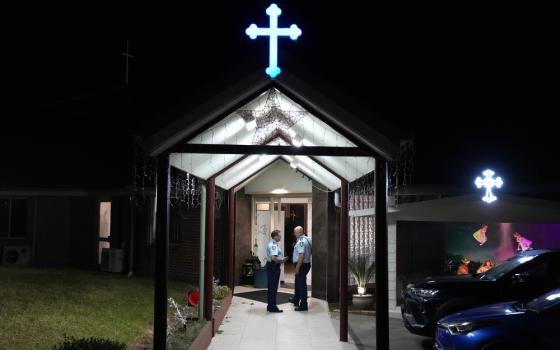On this day we celebrate the feast of St. Maria Crescentia Höß, a Franciscan of Kaufbeuren, Bavaria, in the Diocese of Augsburg.
Anna Höß was born in 1682 to Matthias Höß and Lucia Hoermann, poor weavers, the sixth of their eight children. She was a gifted child, and one of her greatest gifts, mentioned by Pope John Paul II in his Homily at her canonization, was her beautiful voice.
The town of Kaufbeuren was only one-third Catholic, but many of the Protestants, including the mayor, Andreas Wöhrlin, attended Mass to hear Anna sing. She longed to enter the Franciscan convent in the town, but her parents could not afford the dowry. The mayor, who was helping the nuns deal with the problem of a noisy tavern near the convent, asked them to admit Anna Höß without a dowry.
They agreed reluctantly. Anna became Sister Crescentia, but the other nuns called her Weberbutzen (weaver scrap) because she had come from parents too poor to pay a dowry. She was given the worst duties and made to sleep on the floor of other sisters' cells. She was gemobbt (bullied) by the other sisters who hoped the treatment would cause her to leave the convent. The Pope mentioned the bullying in his Homily: "Sorrow did not spare the saint. 'Mobbing' took place in her time. She endured the intrigues of her own community, without ever doubting her own vocation. The long period of suffering allowed her to grow in the virtue of patience."
In 1707, the superior, Theresia Schmid, was removed from office for incompetence. The new superior, Johanna Altwöger, recognized the fact that Crescentia had a true vocation. She tested her severely, but in 1710 she appointed Crescentia portress and nurse, two important positions in the community.
As portress, Crescentia took care of the beggars and everyone else who came to the gate. She gave spiritual and material aid to all who asked for it. Her reputation for wisdom and counsel spread beyond the town, and in the convent, her holiness was finally recognized. She was made novice mistress in 1717.
People of all classes visited and wrote to Crescentia seeking advice: Kings, Electors, Princesses, Abbots, Empresses, were among Sister Crescentia's visitors and correspondents.
In 1741, Crescentia was elected superior. She improved the food served to the hard-working sisters, and she invited guests to dine with the community and be entertained by singing. Cresentia composed songs and played the trumscheit, a one-stringed instrument often played by nuns.
On April 5, Easter Sunday, 1744, Crescentia died. The holy religious, the counselor of rich and poor, the mystic, the musician, the beloved friend of Catholics and Protestants, was laid to rest in the convent chapel.
Click here for a brief account of Crescentia's life by her biographer, Karl Pörnbacher.
This year, 2011, is the 750th anniversary of the Franciscan convent at Kaufbeuren, now known as Crescentiakloster, and the 10th anniversary of the canonization of St. Crescentia. Click here for information about GlaubensFest 2011. Scroll down nearly all the way to see a picture of the beautiful convent.
Click http://www.kaufbeuren.de/desktopdefault.aspx/tabid-920/1162_read-6472/> here for information about "Crescentia und ihr Kaufbeuren", a card game designed to help players learn about St. Crescentia and the town.
Click here for a picture of the reliquary in which St. Crescentia's remains are enshrined and for a picture of her carrying water in a sieve.
On this page is a picture of Crescentia am Webstuhl (loom).
Click here for information about making a pilgrimage to Crescentia's sites in June.
This is a YouTube video of Sister Regina Winter, Superior of Crescentiakloster, taking some pilgrims around Kaufbeuren.



